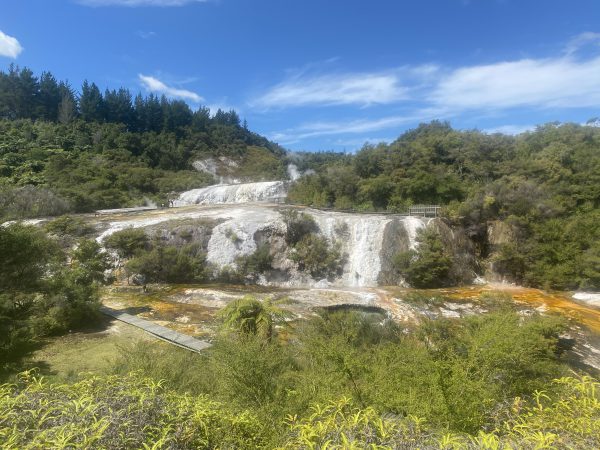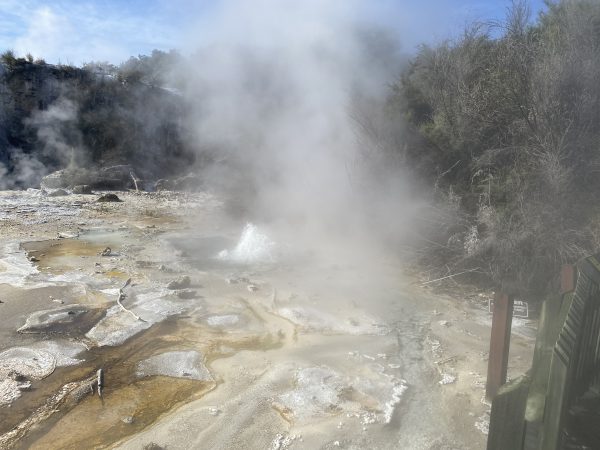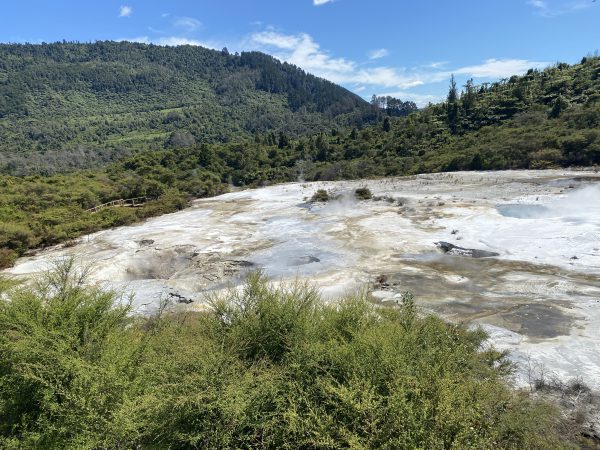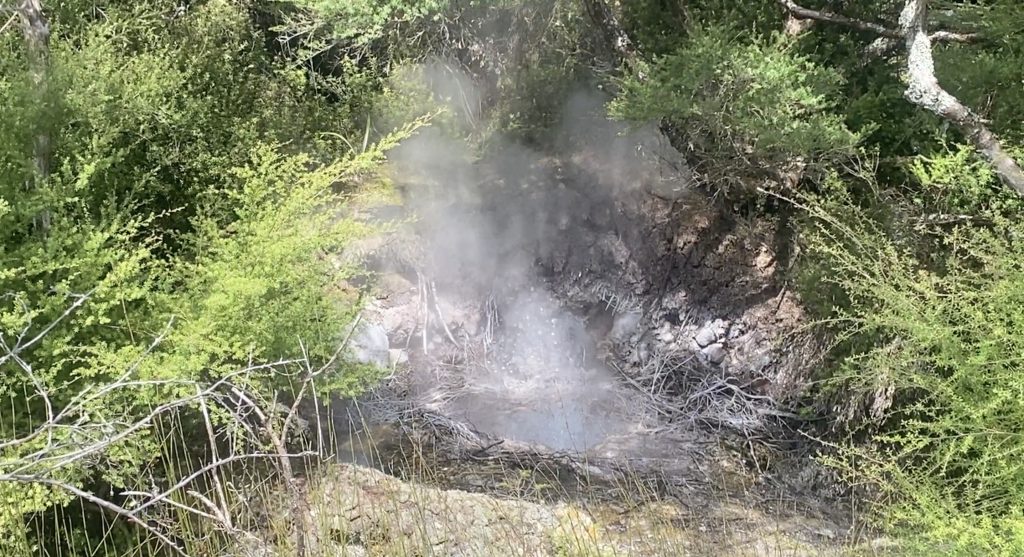Posted on
Tag: Cascade Geyser
Posted on
Posted on
Observations for 2023 March 08
It was clear when we started the drive, but by the time we got to the junction with State Highway 35, there was fog. It got really thick as we approached the Waiotapu thermal area, and I expected it to clear after that, but it was foggy all the way to Orakeikorako.
We arrived just before a busload of tourists arrived, but got across the lake on the ferry well before they arrived in the thermal area. Over the next twenty minutes, the fog cleared, the air warmed and it was a bright and clear the rest of the day.
The first thing of interest I noted was that Bush Geyser was now visible from the trail. In our previous visit, I didn't even know about it despite it only being a couple of meters off the trail. But back then, it was hidden by think underbrush, which is characteristic of most of the thermal area. Not knowing how it behaves, I was under the assumpt that it was dormant since there was no evidence of any wash zone around the vent. That would prove to be a wrong assumption.
Within the first half hour, we saw eruptions of Cascade and Sapphire. We didn't stick around for intervals, but went onward and upward onto the next terrace. There we found Wairiri Geyser active. The previous visit, four years ago, it was a quiet, cool, brown pool. Now it was boiling and splashing up to a meter high, with copious discharge under the walkway.
Nearby were the new features which had appeared underneath the boardwalk. (Last year I discovered a paper in which a researcher went around finding areas of hot ground. One of the areas, years before the breakouts, was that exact area under the old boardwalk.) They look like they haven't erupted in a long time. Some gurgling could be heard from one of the vents, which was the extent of the activity. The vent closest to Wairiri, on the left, had runoff coated with slime running into it. The boardwalk itself had been replaced since last time, and the undergrowth was already starting to obliterate the old trail in places.
Artists Palette was disappointing. There was almost no water being discharged anywhere. Last visit there was a nice thermal waterfall behind Wairiri and flooding into Dreadnought Geyser. That was gone. All the features on the left, as seen from the overlook shelter were completely drained. Last visit they were full, boiling and featured several pool type geysers.
Feature #812 had been a thin jet perpetual spouter coming out of a broad pool. It was not erupting, and it's pool area looked damp at best. Later in the day we saw #812 erupting, It was much wider and more ragged, and was acting as a true geyser, but did not fill out the pool area. The water was confined to the central vent.
The sounds of an eruption were usually audible from the area to the right of Psyche's Bath, like four years ago. Still have no idea what is causing them.
The only activity that was new was from what I believe is vent #735. This was a perpetual spouter about a half meter high which would cycle up and down over the course of a minute or so, rising and falling abou 30 to 40 centimeters.
On the side of the boardwalk, opposite the terrace as one approaches the junctions and observation shelter is a large, hot pool that I don't remember from the previous visit. It may also have been a case of something being hidden by the underbrush.

By this time we decided to concentrate on the Emerald Terrace features Sapphire and Cascade. At least there we would be seeing eruptions.There may have been other geysers active on Artists Palette, but we didn't want to spend the time to find out.
We got back and with a few minutes saw eruptions of both Sapphire and Cascade. We were able to infer that either we'd missed an eruption of Sapphire, or it was having shorter intervals than four years ago. As it turned out, Sapphire was having shorter intervals, consistently erupting every 35 to 40 minutes. Between major eruptions, every three minutes or so it would have a short minor eruption episode. At first these consisted of heavy, noisy steam, but as the interval progressed, these would turn into weak splashing lasting maybe 10 seconds. The start of the major eruption almost immediately appeared different and stronger compared to the minors.
The eruptions usually lasted about 1m30s to 1m45s, but some were as short as 1m16s and one eruption had some late splashes pushing the duration past two minutes.
Cascade was having longer intervals than our previous visit, consistently 19 to 20 minutes apart. Otherwise they seemed unchanged from four years ago. The start was sudden. My usual way of catching the start on video was to start recording just before 19 minute mark.
Early in the afternoon I finally got to see activity in Bush. This consisted of a lot of noise, and a single visible splash. Over the next 45 minutes I saw several such episodes, mostly noise but with a splash or two.
At one point, I saw steam visible behind the ridge to the west, where Kurapai should be. It lasted for at least ten minutes, and I didn't see any more steam there the rest of the visit.
As with the other thermal areas we visited, visitation seemed low, with only a few buses visible in the parking lot across the lake.
Then there was a noisy episode which lasted longer. It gradually changed to splashing, always within the crater rim and with almost no discharge. Some of the water droplet may have got about a meter above the rim.
We ended up seeing 16 eruptions of Cascade, and 8 eruptions of Sapphire. The last eruptions were the last possible ones before they area was closed.
We also got to see Pohutu in eruption as we drove past on our way to fuel up our car.




